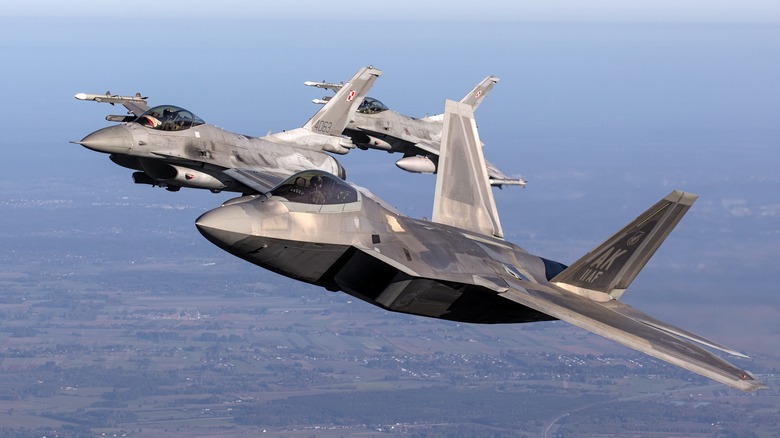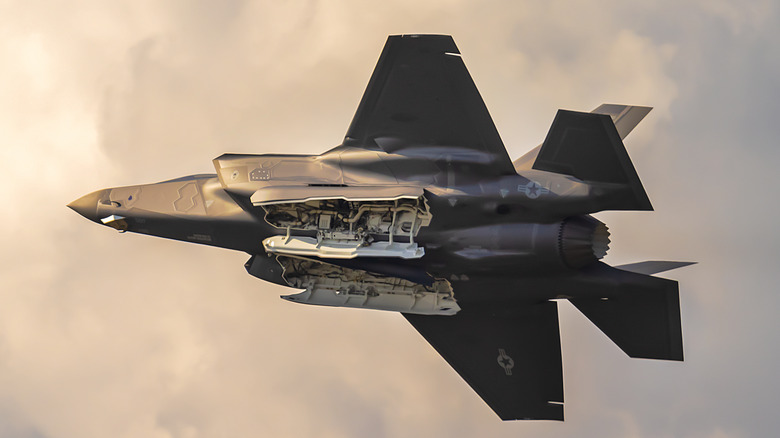Why Was The F-22 Fighter Jet Discontinued? Here's What You Need To Know
The fifth-generation F-22 Raptor fighter jet is one of the most advanced planes in existence — the F-22 can reach a top speed of Mach 1.7 and has enough stealth that other pilots can't get a lock on it even when they can spot it. It's been used by the U.S. Air Force since 2005 and, despite ordering it discontinued in 2011, the Air Force has continued to extend the existing planes' service. In fact, they're getting upgraded — which will cost billions of dollars. That's ironic, considering that high costs have been one of the F-22's biggest weaknesses, leading to the program's end.
In fact, The National Interest reported that a 2017 study found restarting the discontinued program would cost $50 billion for 194 more aircraft, with $10 billion of that just for restarting production. And existing F-22 jets are known to have maintenance and reliability issues, meaning high costs after production as well.
While the F-22 is impressive, more capable fighter jets are starting to supplant it. Even after the Air Force invested $11 billion in F-22 updates, the fleet is still becoming obsolete when compared to China's 5th-generation J-20s, along with many other stealth fighter programs in China and beyond. And that's not taking future 6th-generation jets into account.
The F-35 fighter jet is the Air Force's priority -- for now
The F-35, formally known as the Lockheed Martin F-35 Lightning II, entered the Air Force in 2015 to be used for combat, surveillance, and intelligence. Due to its versatility, speed, and stealth, the F-35 is considered one of the world's most advanced jet fighters. It's packed with the all the latest technology, like Active Electronically Scanned Array radar and an Electro Optical Targeting System. The Air Force currently has 600 in its fleet and plans to buy 1,800 more. The issue? The F-35 program isn't cheap either, with an expected $2 trillion cost through 2088.
It's necessary to upgrade the F-35 further, though, to stay ahead of other countries. This could prove tricky, however, since China may be planning a 6th-gen White Emperor fighter jet that can break through the Earth's atmosphere and fire weapons from space. The White Emperor could be ready for production as soon as the late 2030s, which has left the F-35's future unclear.
Outgoing Air Force Secretary Frank Kendall said in December 2024 that F-35s are still part of America's plan despite major development setbacks surrounding their upgrades. While a 6th-generation jet could be a future necessity, he said, this would be another expensive and lengthy endeavor. For now, the F-35 still rules the American skies — but the planes of the future could look very different, including the possibility at some point of relying only on drones.

